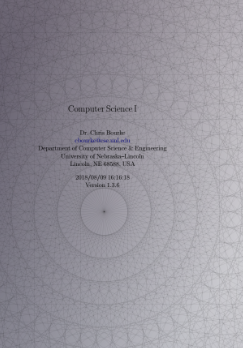Computer Science I

- Author: Dr. Chris Bourke
- Language: ingliz tilida
- Writing: ingliz yozuvida
- Publisher: https://open.umn.edu/opentextbooks/textbooks/996
- Year: 2018
- Views: 528
This basic idea informed how I structured this book. There is a separation of concepts and programming language syntax. The first part of this book uses pseudocode with a minimum of language-specific elements. Subsequent parts of the book recapitulate these concepts but in the context of a specific programming language. This allows for a “plug-in” style approach to Computer Science: the same book could theoretically be used for multiple courses or the book could be extended by adding another part for a new language with minimal effort. The exercises in this book are a variety of exercises I’ve used in my courses over the years. They have been made as generic as possible so that they could be assigned using any language. While some have emphasized the use of “real-world” exercises (whatever that means), my exercises have focused more on solving problems of a mathematical nature (most of my students have been Engineering students). Computational sciences have become a fundamental tool of almost every discipline. Scholars have used textual analysis and data mining techniques to analyze classical literature and historic texts, providing new insights and opening new areas of study.